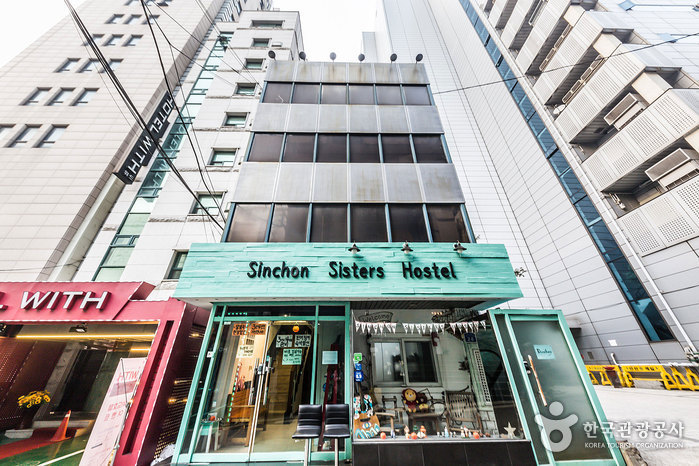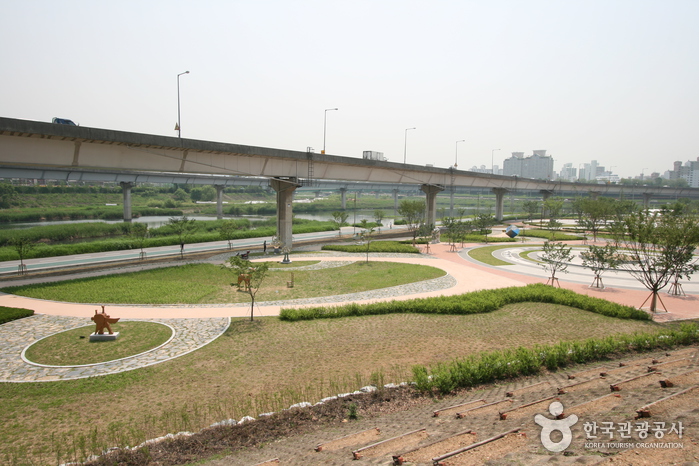Louis Quatorze Umbrella & Parasol [Tax Refund Shop] (루이까또즈 우양산)
5.4Km 2024-06-27
62, Dobong-ro, Gangbuk-gu, Seoul
-
Soseoul Hannam (소설한남)
5.4Km 2024-02-22
B-B1, 21-18 Hannam-daero 20-gil, Yongsan-gu, Seoul
Soseoul Hannam is a Korean fine-dining located in Hannam-dong. It offers modern interpretations of traditional Korean cuisine. The menu consists of lunch and dinner courses. Popular dishes include sliced raw fish served with fischer’s ragwort and aged kimchi, as well as charcoal-grilled spicy stir-fried webfoot octopus and chicken dishes. It's also known for its diverse selection of traditional liquors for pairing. In 2023, it was selected for the Michelin Guide Seoul.
Olive Young - Sinchon Rotary Branch [Tax Refund Shop] (올리브영 신촌로터리)
5.4Km 2024-04-18
1F, 133, Seogang-ro, Mapo-gu, Seoul
-
Sinchon Sisters Hostel (신촌 시스터즈)
5.4Km 2024-12-23
24 , Baekbeom-ro 2-gil, Mapo-gu, Seoul
+82-10-4354-1613
Sinchon Sisters is a friendly guesthouse in Mapo-gu, Seoul, that caters for young travelers. Rooms are for two, three or four people, and each room has its own bathroom. There is no separate dining area, but you can bring food into your room and there’s a microwave for visitors’ use. Washing machines and dryers are also provided (payment needed). Transport is convenient: Sinchon Station and Sogang University Station are a 5 minutes’ walk away, and there are bus stops nearby - including for the airport express bus service. The Hongdae, Hapjeong, Mangwon, and Sangsu areas are all nearby.
Kwangjuyo - Hannam Branch [Tax Refund Shop] (광주요 한남)
5.4Km 2024-06-27
28, Hannam-daero 20-gil, Yongsan-gu, Seoul
-
CheongKwanJang - Hannam Branch [Tax Refund Shop] (정관장 한남)
5.5Km 2024-04-17
#118, 60, Hannam-daero, Yongsan-gu, Seoul
-
Soon Chun Hyang University Hospital Seoul (순천향대학교 부속 서울병원)
5.5Km 2025-10-23
59 Daesagwan-ro, Yongsan-gu, Seoul
Soonchunhyang University Hospital Seoul has established a systematic and dedicated system for international patients covering all stages from pre-entry processes to departure and aftercare. Based on the medical records provided by the patient, we consult with the medical staff of each specialty to come up with an estimated treatment plan and costs to help patients prepare for their treatment in Korea. Our dedicated outpatient and inpatient teams provide expert medical interpretation, guidance, and integrated appointment management to ensure prompt and organized medical care for international patients throughout their stay. Complete with spacious and comfortable rooms, the International Ward is staffed by coordinators and a nursing team reserved for international patients. Multidisciplinary care with organized systems, state-of-the-art medical equipment, and top-notch medical staff ensure accurate diagnosis and the best treatment outcomes possible.
Yukjeon Hoekwan (역전회관)
5.5Km 2024-03-19
47, Tojeong-ro 37-gil, Mapo-gu, Seoul
+82-2-703-0019
Located in Mapo, Yukjeon Hoekwan is a Korean restaurant that has been selected for the Michelin Guide Seoul 2023. It has kept its original taste through four generations. The signature dish is the Bassak bulgogi (thin-sliced bulgogi), which is served without soup and has a moist juiciness, tender texture, and not-too-sweet seasoning. Patrons have the option to other dishes including yukhoe bibimbap (beef tartare bibimbap), nakji bokkeum (stir-fried octopus), bossam (kimchi cabbage wraps with pork), and samhap (skate, pork, and kimchi combo). In addition, the handcrafted makgeolli (unrefined rice wine) made in their own brewery is a must-try.
Salgoji Sports Park (살곶이 체육공원)
5.5Km 2024-03-20
16-18 Sageundong-gil, Seongdong-gu, Seoul
Salgoji Sports Park is located along the Joongnangcheon Riverside near Hanyang University. Its name "Salgoji" holds deep historical significance, meaning "the place where an arrow is shot" in Korean. The park features facilities such as an inline skating rink, soccer field, basketball court, and badminton court. There are dedicated bicycle paths and pedestrian walkways around the park. Throughout the year, walking festivals and mini marathons are organized, making it a beloved spot among cyclists. In the summer, an outdoor water playground is operated.
![Louis Quatorze Umbrella & Parasol [Tax Refund Shop] (루이까또즈 우양산)](http://tong.visitkorea.or.kr/cms/resource/96/3313996_image2_1.jpg)
![Allo [Tax Refund Shop] (알로)](http://tong.visitkorea.or.kr/cms/resource/67/3312967_image2_1.jpg)

![Olive Young - Sinchon Rotary Branch [Tax Refund Shop] (올리브영 신촌로터리)](http://tong.visitkorea.or.kr/cms/resource/55/2888655_image2_1.jpg)

![Kwangjuyo - Hannam Branch [Tax Refund Shop] (광주요 한남)](http://tong.visitkorea.or.kr/cms/resource/71/3314171_image2_1.jpg)
![CheongKwanJang - Hannam Branch [Tax Refund Shop] (정관장 한남)](http://tong.visitkorea.or.kr/cms/resource/34/2888134_image2_1.jpg)

 English
English
 한국어
한국어 日本語
日本語 中文(简体)
中文(简体) Deutsch
Deutsch Français
Français Español
Español Русский
Русский